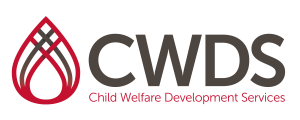CWDS Curriculum
Engaging Families and Communities for Change
Level: Advanced Practice – Line Workers, Supervisors/Managers
Credits: 6
Intended Audience: Line workers interested in improving skills for partnering with families, multidisciplinary teams and communities. Supervisors and managers of line workers relying on administration for support and guidance as redesign initiatives and innovative practices evolve
Learning Objectives:
- During this training, participants will discuss professional roles, partnering, and what partnership means from a new perspective
- At the completion of this training, participants will be able to identify barriers to
effective collaboration, particularly those which most influence them - At the completion of this training, participants will be able to list several keys to successful partnering with families and communities
- At the completion of this training, participants will be able to describe several “best practices” of collaboration that lead to more successful partnering relationships
Topics Include:
- Legislative support for partnering
- Benefits of partnering
- Hurdles/barriers to effective partnering
- Organizational/societal and systemic barriers
- Best practice supports
- Keys to successful partnering
- Techniques for partnering
CalSWEC Competencies to be addressed:
5.2 Student is able to critically evaluate the relevance of intervention models for their application with diverse ethnic and cultural populations
6.6 Student works collaboratively with biological families, foster families, and kin networks, involving them in assessment and planning and supporting them in coping with special stresses and difficulties
7.1 Student is able to assess the impact of becoming a client of the child welfare system on children and families and the effects of family transitions
7.4 Student is able to identify agency and legislative policies and procedures that create barriers to the growth and development of children and families
8.5 Student can demonstrate knowledge of how organizational structure and culture affect service delivery, worker productivity and morale
8.9 Student demonstrates the ability to negotiate and advocate for the development of resources needed by children and families to meet their goals
AFSA Outcome Objectives Addressed:
- Child safety
- Innovative approaches to safety, permanency and well-being
- Timely and intensive services to families
Community Collaboration & Partnership
Engagement & Interviewing



